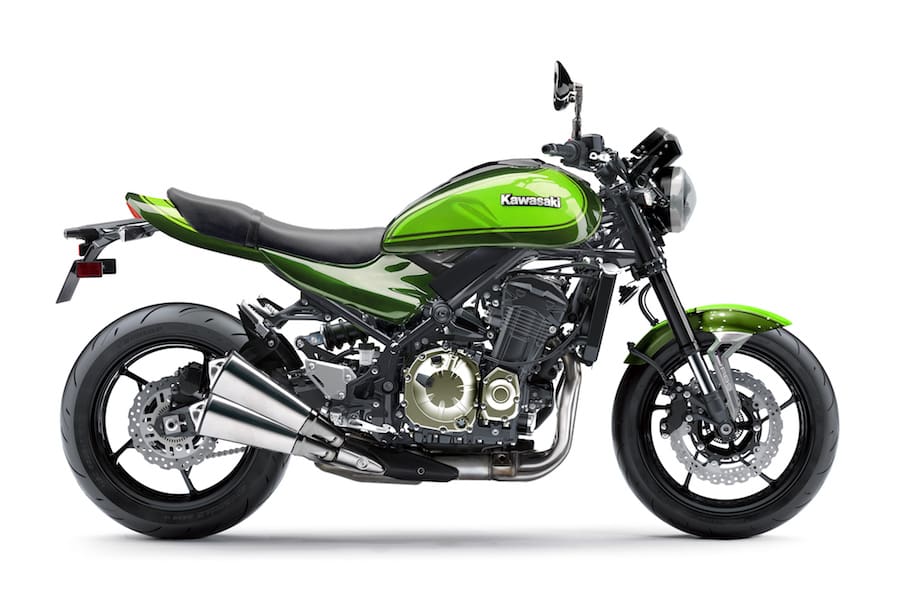We’ve known for a year Kawasaki has been planning to produce a new Z900RS model and now we’ve seen official documents that give 100 per cent confirmation it will form part of the 2018 model range – and even reveal some of the bike’s technical details.
AMCN’s Japanese sources had previously told us the new bike would be based on the new-for-2017 Z900, but with its engine tweaked to look more traditional, with fake air-cooling fins on the sides of the cylinders. The traditional look will be completed with retro styling harking back to the original Kawasaki Z1.
The new technical information we’ve seen appears to confirm much of that. The engine will indeed be a 948cc four-cylinder, and its internal engine code – ZR900BE – reveals that it is essentially the same as the Z900 motor. However, there are changes to suit the retro Z900RS.

Despite the sporty-sounding overtones of the RS branding, the retro Z900RS will be less powerful than the Z900. While the current Z900 makes 92.2kW at 9500rpm, the Z900RS will peak 1000rpm lower at 8500rpm and manage only 82kW.
Presumably the reduced revs and lower peak power will be compensated for by a fatter torque curve low down in the rev range.
The official documents also reveal that the Z900RS will have a different exhaust to the Z900.
Notably, the new bike will be louder both at peak revs and during ride-by tests than the Z900, which could support Japanese rumours that it will feature a Z1-style exhaust system with four tail pipes, two on each side.
The louder ride-by test results may also be an indication that it has lower gearing than the Z900, again emphasising increased low-end torque and improving acceleration at the expense of some top-end speed.
Teasing it out
While the bike’s official launch is likely to be set for 25 October during Kawasaki’s domestic Tokyo show, the company has commenced what we expect to be a series of teaser videos. The first video dropped last week and, while you don’t see too much of the bike itself, there are plenty of styling cues that hark back to the original 1972 version. The colour, for one, takes us right back to the early 1970s, as does the riding position, the instrument cluster and the singular round headlight.
By Ben Purvis











